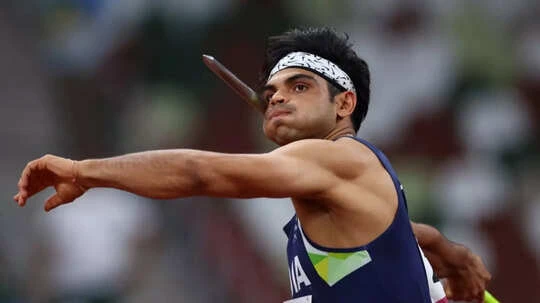Dr Klaus Bartonietz, who guided Neeraj Chopra to Olympic gold and silver and World Athletics Championships silver and gold, said the star Indian javelin thrower is capable of winning one more Olympic medal.
Biomechanics expert Bartonietz, who trained Neeraj between 2019 and 2024, said the Indian thrower will do well in the future due to his strong support system.
Neeraj recently failed to finish in the top two of an international competition for the first time since Tokyo 2020, as the defending champion finished eighth at the World Championships in Tokyo. The last time he failed to make the top three of an event was back in 2018.
Despite his recent low, Bartonietz is confident of Neeraj – who currently trains under three-time Olympic and World Championships gold medallist Jan Zelezny – making a comeback and shining at the Olympics again at Los Angeles 2028.
“He (Neeraj) has the capacity to win another Olympic medal. Jan Zelezny did it three times, so he knows what it takes mentally. Neeraj’s still young, 27 or 28. He aims high but isn’t overconfident – that’s important. He’s dealt with injury before, and he’s thrown 90 metres. He also has a very good physiotherapist in Ishan Marwaha, who’s worked with him for years. That helps. I think he’ll be in contention again,” Bartonietz told Sportstar.
The 76-year-old, however, called for caution as the batch of players Neeraj belongs to are almost of the same age, including reigning Olympic gold medallist Arshad Nadeem of Pakistan – who beat Neeraj at the 2024 Paris Olympics.
“Anderson (Peters) and Arshad (Nadeem) are about the same age as Neeraj. For the next three years, these three will be at the top. It’s hard to say who will come out on top at the big events. You can do everything right and still have the bad luck that Weber had in Tokyo,” said Bartonietz, who is currently the coach of Keshorn Walcott – the gold medallist at the Tokyo Worlds.
He said his ward will also be in the fray in LA. “I think Keshorn can still be competitive at the Los Angeles Games. He’s been doing this since he was 18 and has stayed consistent. It’s not just about age; it’s about biological age, health, and the support team. Can he bring his body to the right condition at the right time? Weber, Peters, Neeraj, and Keshorn all have the brains to be champions. They can think about their training and reflect on what they’re doing,” he said.
Bartonietz also spoke highly of rising Indian javelin thrower Sachin Yadav, who made a commendable fourth-place finish at the Worlds in Tokyo on his debut at the event.
“I wouldn’t have been surprised if Sachin had won a medal. Half a metre more and he would have been on the podium. He was already over 86 metres and at that distance, 40 centimetres is nothing,” said Bartonietz.
“He’s very tall. That’s a great benefit, but he’s also technically very sound. These guys are all strong, but it’s not about how much you can lift or sprint. Sachin’s best points are that he’s both powerful and technically good. He has a very stable front leg and great coordination,” he added.
‘Don’t think 95 metres is impossible for Sachin’
However, Bartonietz said Sachin should focus on consistency rather than chasing mighty throws. “Do I think he can throw 90 metres? Of course he can. It’s very possible. I don’t even think 95 metres is impossible for Sachin. But you need to be realistic. Neeraj threw 86m in 2016 and it took him nearly nine years to get to 90 in competition. Neeraj started young. He was 18 when he threw 86m. Sachin is around 24 or 25. And the road to 95m is very stony. It takes a lot out of you. (Johannes) Vetter threw 97m and paid the price with his body. That number can play with your head too,” he said.
“We should avoid all this talk of 90 metres. It should be about consistency. We had this young German (Max Dehning) who threw 90 but now he’s at 75. All this hype about metres is useless. It’s counterproductive. Sachin needs to stabilise at 85-86m, as Neeraj did around 88. If he can throw 85-86m anytime, he’ll always be in contention for the Commonwealth Games and the Olympics,” Bartonietz added further.
